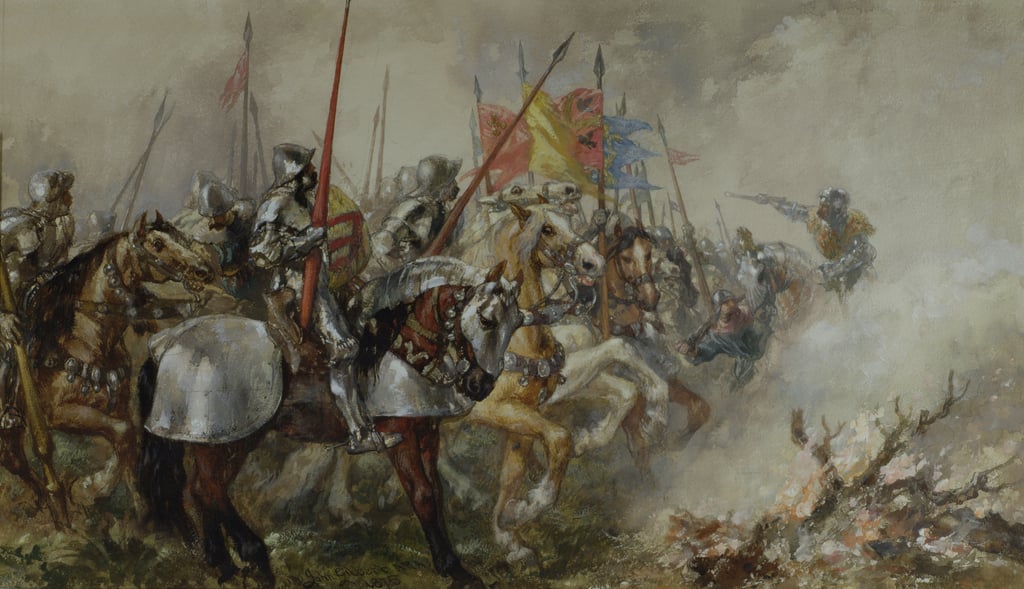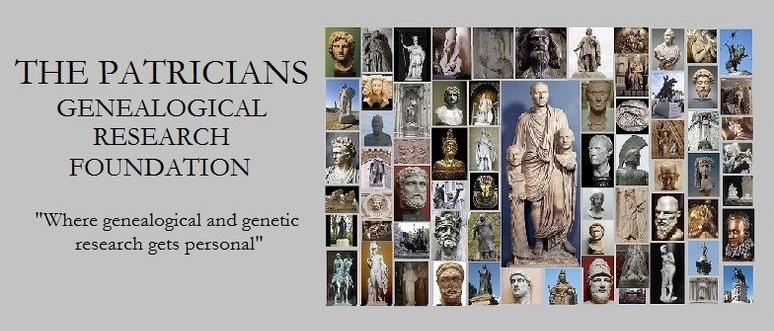


— HENRY V, ACT 3 SCENE 1 YouTube video – Henry V (1989-Kenneth Branagh)



Henry V Lancaster’s crushing defeat of the Valois army at the Battle of Agincourt resulted in the extinction of quite nearly an entire generation of French knighthood. It also brought about the end of French chivalry, at least as it pertained to battlefield standards as first put into practice during the 9th century with the enactment of the Edict of Pistre by Charles the Bald (823 – 877), Charlemagne‘s grandson. It can be said the flower of French chivalry forever perished that day while hopelessly mired in the mud under the murderous rain of English longbow arrows. Nevertheless, King Hal’s glorious victory resulted in the achievement of his goal to unify all of England under his reign, primarily to serve lethal notice to the French monarchy that he was a potent military force to be reckoned with, henceforth.
In 1337 French King Philip VI, an agnatic descendant of Hugh Capet (939 – 996) 1st “King of the Franks”, started the Hundred Years War with his confiscation of Gascony, an Angevin Empire territorial possession, from Edward III Plantagenet (1312-1377) King of England. The provocation effectively served notice on Edward that he intended to render him as his vassal and persecute his claim on the French throne.
Despite being the heir apparent, Edward later ceded the French crown to Philip’s son Jean II Valois during the time of the Black Death, The pandemic and concurrent peasant revolts weighed heavily on all aspects of his management of the royal government. He thus ratified the Treaty of Brétigny in 1360. In effect, he rubber-stamped Jean’s monarchy with the condition that Edward would remain regent over his French landholdings. They more or less established a co-regency together with Edward in perpetual absence. The treaty also gave both sides of the succession battle a nine-year much-needed respite from the hostility of the Hundred Years War. With Charles V Valois (1338 – 1380) declaring Edward’s Angevin landholdings forfeit to himself in 1369, hostilities resumed with a vengeance.
The Yorks, the Lancasters’ cousins, continued the English-French monarchal succession battle until 1453. The French victory over John Talbot, 1st Earl of Shrewsbury (1384 – 1453) at the Battle of Castillon marked the end of the Hundred Years War. It also portended the beginning of the end of the House of Plantagenet reign over England, which formally terminated with the defeat and death of Richard III York at the Battle of Bosworth Field in 1485 during the War of the Roses. Duke John Howard, KG (1421 – 1485) , his lifelong friend and aide, also perished during the battle. In defeating York, Henry Richmond (later Henry VII Tudor) claimed the throne which began the relatively short-lived Tudor dynasty. His son Henry VIII Tudor (1491 – 1547) King of England and Ireland was perhaps the most controversial monarch in English history.
He’s ranked #472 in Hart’s Most Influential People in History – Top 500 List (125).
Related ancestral blog articles
Henry V Lancaster, King of England, Lord of Ireland, Duke of Aquitaine, Prince Regent of France
Birth 1386 in Monmouth Castle, Monmouth, Monmouthshire, England
Death 1422 in Chateau, Bois De Vincennes, Seine, France
agnatic descendant of Henry II Plantagenet (1133 – 1189) 1st Plantagenet King of England
Ancestry.com citation/Lineages
2nd cousin 17x removed BOHUN-FITZALAN-MOWBRAY-HOWARD-WOOD-COLLINS
5th cousin 17x removed FITZALAN-MOWBRAY-HOWARD-WOOD-COLLINS
7th cousin 19x removed VALOIS-CAPET-D’EVREUX-ROHAN-LANDRY-BOURG-CYR-BRULE-BRULE
8th cousin 21x removed BEAUMONT-NORMANDY-STOCKPORT-HYDE-CARRINGTON-HOLLAND-SIMMONS-COLLINS
7th cousin 24x removed BOHUN-BADLESMERE-DE CLARE-MARSHALL-WARREN-BARTLETT-SPRAGUE-TRIPP-OUTWATER-COLLINS
13th cousin 16x removed CANMORE-MACALPIN-LE ROY-MAULAY-LA POINTE-MOREAU-GIROUX-MERON-BRULE
16th cousin 16x removed LANCASTER-BEAUMONT-COMYN-MORMAER-MACDUFF-DUNKELD-DUNBAR-ANGUS-FITZALAN-BRUCE-STEWART-DE LA HAYE-TATE-CHANDLER-SIMMONS-COLLINS
16th cousin 18x removed NORMANDY-MACALPIN-LE ROY-MAULAY-LA POINTE-MOREAU-GIROUX-MERON-BRULE
20th cousin 18x removed HAINAUT-D’AVESNES-BRABANT-ALSACE-BLOIS-VERMANDOIS-CAROLMAN-FLANDERS-CAMBRAI-LENS-DEMAREST-TERHUNE-BANTA-BRINKERHOFF-OUTWATER-COLLINS
husband of 5th cousin 18x removed VALOIS-D’EVREUX-ROHAN-LANDRY-BOURG-CYR-BRULE
Sources
Band of Brothers: Henry V and the Battle of Agincourt
Agincourt battle recreated as model by Nottingham brothers
Shakespeares’s Henry V Summary
YouTube videos – Battle of Agincourt
The Patricians, A Genealogical Study – Ebook Editions US$5.95


Steven Wood Collins (1952 – ) Antiquarian, Genealogist, Novelist

